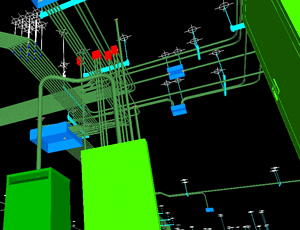
Building information modeling is a very useful tool for optimizing initial construction build and lowering facility development cost.
It's great technology, but how do you fund it? If you can't fund it, you can't get it.
I think the answer is that we can fund BIM as a facility development cost if we show owners the value of incorporating BIM into a master system integration strategy that will reduce operations and maintenance costs long after construction is completed.
BIM has been focused on the 25% of total facility costs bound up in design and construction, but if we can show owners how BIM can become a tool to help pull down the other 75% of total ownership costs tied up in operations and maintenance, there will be money on the table.
Start With The Specs
In my role as BIM Pre-Construction Manager for engineering and construction services firm Cupertino Electric, Inc., I am involved with many large, complex construction projects. In a given week, a good number of BIM specifications documents come across my desk from leading general contractors and owners. Most focus on how to optimize initial construction build through coordination, but they are vague to silent on the subject of facility management and the lifecycle efficiency of a building.
During BIM-focused projects, we at Cupertino Electric typically endure through various scope changes and as-built models. And often, somewhere along that process, an owner’s representative suggests that we should leverage the BIM model to do more for the facility and operations teams with modern technology. That often implies designing and engineering a networked building information system with monitors and sensors at well-selected data connection points. But because this request is typically not included in the original scope of work, responding to the late suggestion can be costly, and it becomes more costly the later it is made.
To avoid such additional cost and streamline efforts, a comprehensive approach should be taken to incorporate all key data connection points into the original BIM model to maximize facility and operations use down the road.
What I’m suggesting is the convergence of BIM with electrical metering, building systems and IT networks into a Master System Integration (MSI) strategy that starts during the pre-construction, BIM development phase.
Optimizing the lifecycle of a building should be planned for during the earliest phases of construction so that BIM efforts dovetail with an ultimate MSI strategy. With BIM more mature than ever today, BIM models more prevalent, and “open” building information management systems readily available at lower costs, the timing is right for this approach.


Post a comment to this article
Report Abusive Comment